Snorkeling Hoods
Hoods are particularly useful for snokeling as they protect your head and ears from jellyfish and sunburn while floating in the water.
We've learned this from the pearl divers in the Pacific and Indian Ocean. They tend to wear head covers and clothes to protect their skin when diving for hours.
Choose a fairly tight fitting hood so no big airbubbles can form,
and no water collects in the hood when you swim or come out.
If it is too large it may cover your eyes or flop around.
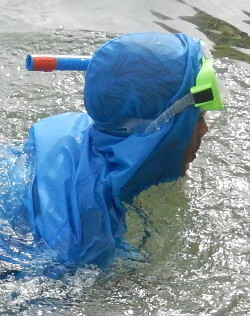
Put the hood up first and tighen it with the strings. The mask straps go over the hood to keep it in place. This avoids your hair getting entangled in the strap.
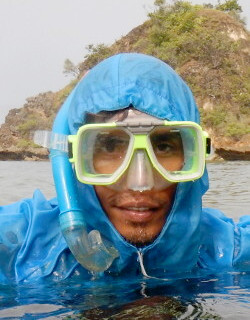
Make sure the hood or any hair stays clear of the mask seal, or it will leak. The hood should wrap around the outside of the mask seal with a fit snug around your face.
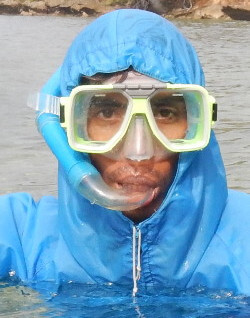
Finally put the snorkel into your mouth and you're ready for submersion. When you dive down head first any remaining air will escape past your waist and legs.
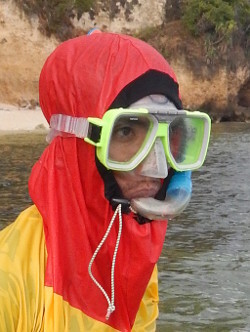
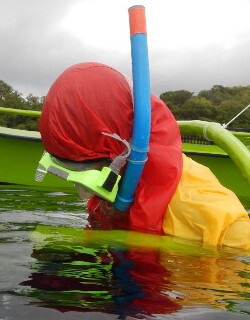
Bright colours for safety
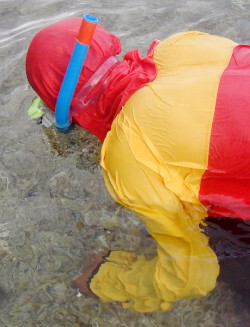
Comfy Snorkeling Suit
Let's put together a snorkeling suit that protects you from jellyfish and sunburn. For a pleasant snorkeling session your swim clothes have to feel really good in the water. Soft Nylon or Pertex fabrics feel really nice on the skin.
We recommend a comfy suit like this:
- Shoes for rocky shores, unless you wear full-foot flippers.
Long socks avoid chafing.
- Long nylon pants that are closed around the ankles and tucked into your long socks
keep little critters and stingers out.
- A swim shirt or tee shirt
that is tucked into your pants avoids sun exposure if the anorak rides up.
- A long hooded anorak, cagoule, or poncho in bright visible colours alerts other people of your presence so you don't get run over by a boat.
Here are a few more low cost snorkelling clothes ideas.
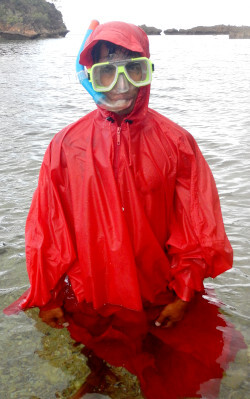
Some folks prefer a hiking cape because of the comfy loose fit.
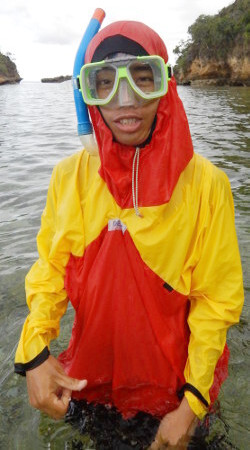
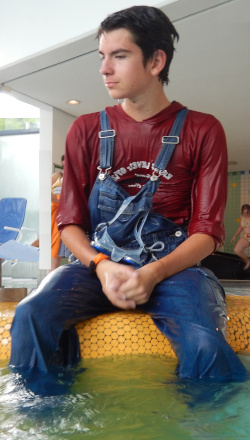
Jeans and hoodie are popular.
